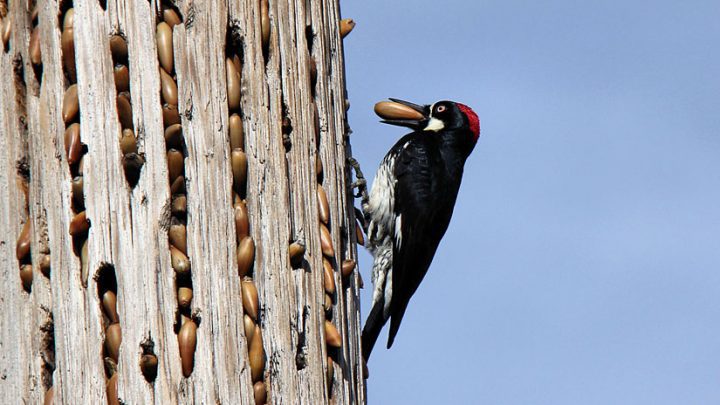How much do birds eat each day?

This completely varies depending on what species you’re talking about. As with mammals, the amount of food a bird eats depends on the caloric value of the food, the size of the bird (the smaller the bird, the more it needs relative to its body weight), the bird’s activity levels, and the temperature of its environment.
A chickadee may eat 35 percent of its weight in food each day while a Blue Jay may eat only 10 percent of its weight and a Common Raven only 4 percent—but they all need more calories on colder days than warmer ones. Hummingbirds can consume 100 percent of their body’s weight in sugar water or nectar every day, in addition to as many as 2,000 tiny insects! Before migration, it’s not unusual for a hummingbird to double its weight, adding a huge amount of fat to power the long journey.
Canada Geese eat lots of grass each day, partly because grass doesn’t have a lot of usable calories per pound. A 5-pound Canada Goose eats about a half-pound of grass per day (about 10 percent of its body weight).

All About Birds
is a free resource
Available for everyone,
funded by donors like you
American Kestrel by Blair Dudeck / Macaulay Library
